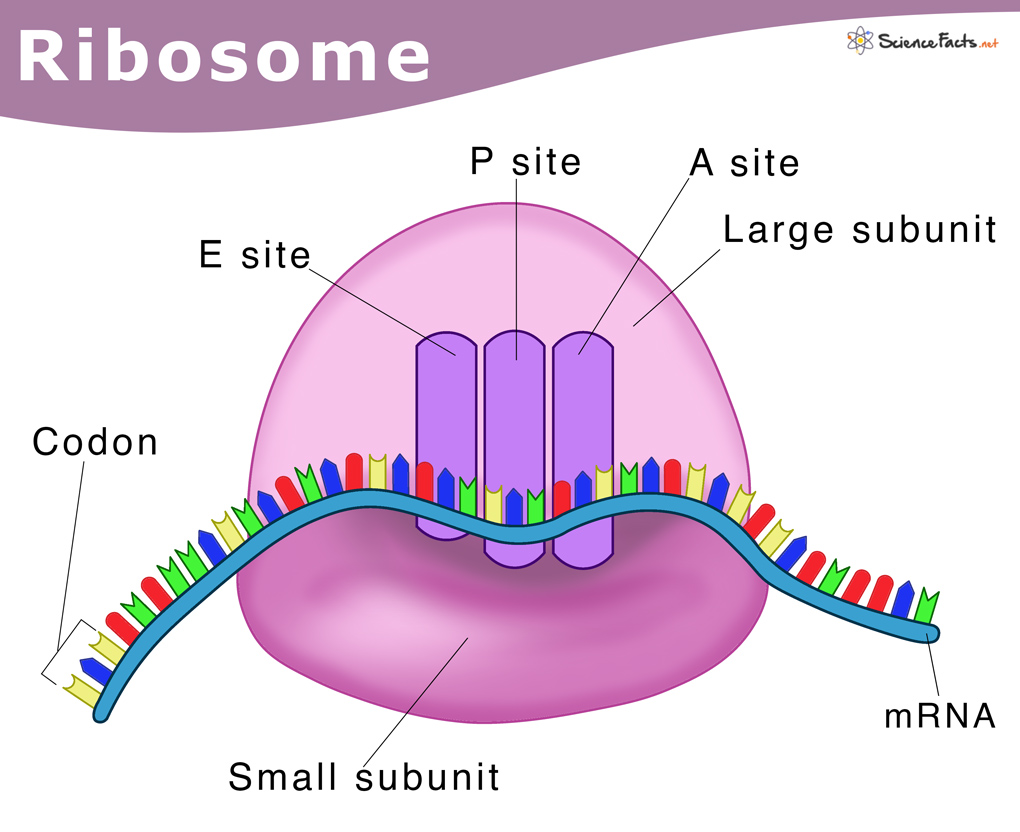Location
Structure and Characteristics
Functions: What Does the Ribosome Do
Where are Ribosomes Made
They are made and packaged in the nucleolus, a small dense region within the nucleus, by a process called ribosome biogenesis.
Abundance
The number of ribosomes in a cell depends on cellular activity. On average, in a mammalian cell, there can be about 10 million ribosomes. In the bacterium Escherichia coli, it accounts to almost 15,000, constituting as much as one-quarter of the cell’s total mass.
Size and Shape
They are remarkable for their uniformity in size and shape. Ribosomes found in higher plant and animal cells are oblate or spheroids in shape, having a diameter of 150 to 200 A0. The exact size of the ribosomes varies, depending on the cell type and whether the cell is resting or participating in cell division. Both free and the bound forms are not membrane-enclosed.
Parts and Their Composition: What are Ribosomes Made Of
They are organelles composed largely of specialized RNA, known as ribosomal RNA (rRNA) and dozens of distinct proteins and thus also known as ribonucleoproteins. Around 37 to 62% of the ribosome is comprised of RNA, and the rest are proteins. When viewed under the electron microscope, ribosomal proteins and rRNAs are arranged into two distinct ribosomal pieces of different sizes, known generally as the large and small subunit of the ribosome. Both the subunits combine to form a complete organelle. The two subunits are classified based on their sedimentation constant, measured in Svedberg unit (S). It offers is a measure of the sedimentation rate of a particle, based on its size, shape, and density.
Types
Based on the sedimentation constant of their subunits, ribosomes are broadly classified into two types: The other important role of ribosomes, where it acts as a stimulator of intermediate chemical reactions of protein synthesis is described below:
Assembling of ribosomal subunitsLinking of amino acids in order as specified by another type of RNA molecule called messenger RNA (mRNA). mRNA is synthesized from DNA by a process called transcriptionBringing together all the elements needed for protein synthesisCarrying out other intermediate chemical reactions such as peptidyl transfer, peptidyl hydrolysis, and ribosomal translocation during protein synthesis
Protein is necessary for almost every biological activity, including growth and metabolism, cell division, and repair, and thus, ribosomes are essential for the survival of living things. A cell without a ribosome would not be able to synthesize proteins and will subsequently die soon.
